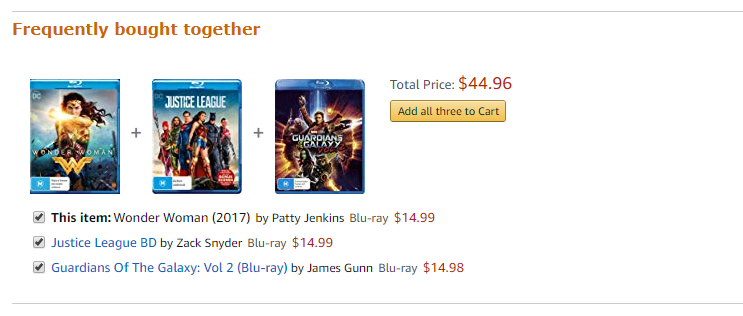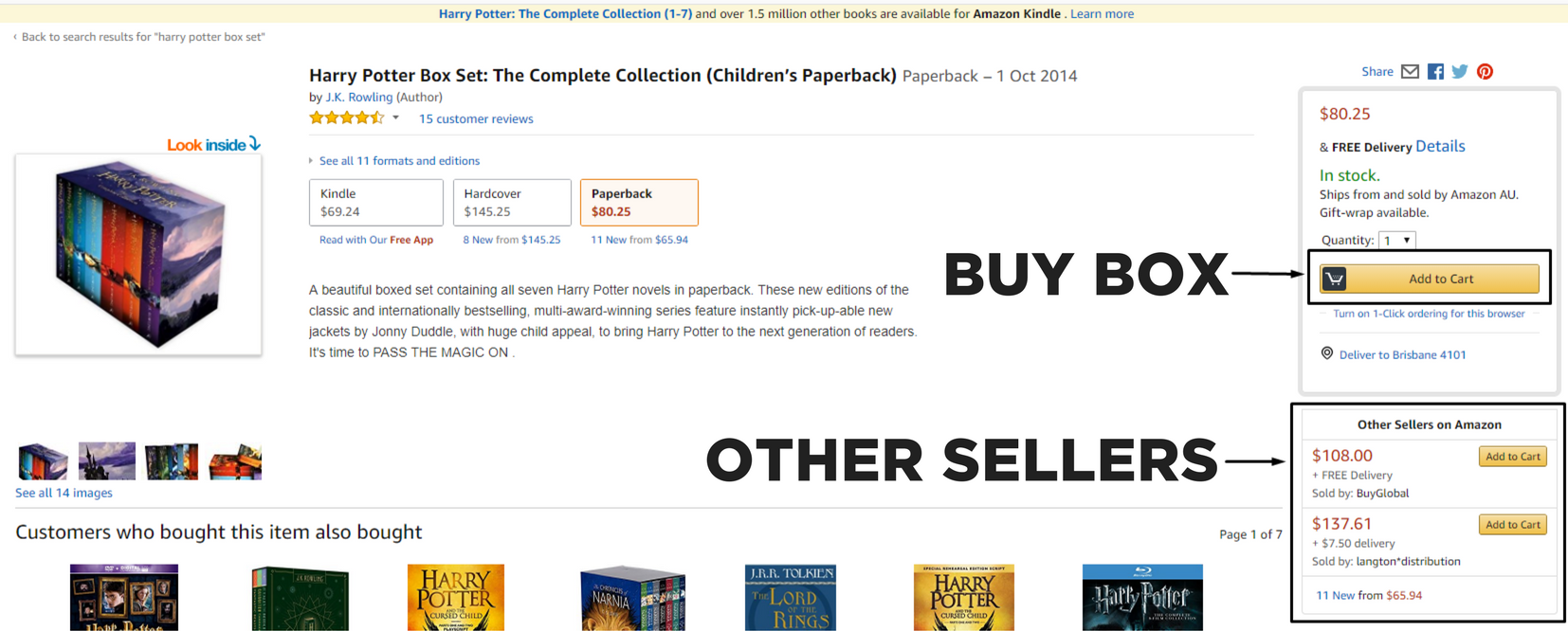
Business • Marketplaces


As you’re no doubt discovering, Amazon Australia is a complicated beast - especially when it comes to pricing and getting on page one of Amazon. But with a few tips and strategies we’ll help you hit your selling price sweet spot - keeping you, your customer and Amazon happy.
Firstly, let’s get one thing straight: contrary to some opinions out there, Amazon Australia isn’t always about the lowest price. Yes, low prices do play a factor in becoming a leading retailer in this marketplace but it doesn’t have to be a race to the bottom. In fact, one of our Neto customers is the highest seller for their product, outselling the second best retailer by 20 to 1, yet their price point is higher.
| Read more: Selling on Amazon: Fact vs Fiction
Here's eight ways you can beat your competitors on Amazon Australia.
As a starting point, it’s vital that you know exactly how much each of your products is costing you. While this seems like a fairly straightforward task, you may well benefit from the advice of an accountant who can really deep dive into your numbers or an advanced ecommerce analytics platform like Neto Analytics Studio. Your cost of sale is more than just your purchase price and should consider the following:
And these costs can vary as you trade. For instance the more products you purchase, the cheaper per unit cost but the more warehouse space and labour you require.
So now you can set your lowest price – the minimum price you’ll accept for a product while still remaining profitable. And your highest price? It’s estimated that your upper limit of your pricing is 20% higher than the most expensive item on page one of search results. Any higher and you’ll never make it to the top of Amazon search results.
| Related reading: 27 Ecommerce Metrics You Should Be Tracking (and How Often)
Now it’s time to see what your competition is up to. Who are they, where do they sit on the first page of an Amazon search and what are their prices? It’s a time consuming task but get used to it because you don’t just need to check out the competition in your start up phase, you need to continue monitoring them - all… the… time - while also keeping an eye out for new players coming on line. If you have hundreds of product lines this may be a near impossible task but at the very least, set up a strategy and schedule. Pick out key products and key competitors that you need to monitor every week, then schedule time to roll through your other product lines every other week
From here you have two options, you can either match the lowest price or build in a small margin of 1-2% above the lowest page.
You don’t need us to tell you that this isn’t the smartest option across the board but it certainly has a place in your Amazon pricing strategy and offers real benefits to your business.
Consider pricing just some of your products in this way. We recommend no more than about 20% of your product lines and this would include items that have been a little slow to move, are reaching their use-by date, are out of season or out of fashion.
You might also like to consider offering discounts on new product lines to boost initial sales or on bundled products (customer buys one and receives a discount on another related item). Lower prices will increase your sales ranking which in turn will lead to more organic sales on an ongoing basis.
What about a lead-in product? There is potential for you to offer a product on Amazon that you don’t make a profit on. Crazy but hear us out. Once a customer has bought from you, they are your customer - so it’s well worth a reduced profit on their first purchase. What’s more, achieving sales on Amazon through this product boosts your overall presence including promotion through the “customer who bought this item also bought” section.

On occasion, you will have a competitor who continually undercuts you. Know your limits and when you reach it, return to your ‘plus margin’ strategy and maybe focus your low pricing efforts on another product.
This strategy keeps you in touch with the lowest price but prevents you getting caught up in a price cutting war. By keeping a buffer of 1-2%, you’re maximizing your profit while still generating reasonable sales and staying in touch with the Amazon first page search results.
Naturally, the more unique your product, the less competition you have. And in this case you need to price carefully. Look at similar items and their pricing on Amazon as well as other marketplaces and ecommerce websites. Apply a standard retail mark up and go from there as it’s better to start high and reduce your price rather than the other way round, you’ll eventually hit on the perfect pricing strategy. Also be sure to really sell the unique features and benefits of your products – let the customer see the value of what you are offering.
If you’re having trouble keeping up with the downward spiral in pricing (and even if you’re not), consider improving the value of your offering with things like free shipping, or express shipping at no extra cost. How about a free gift such as free socks with every pair of boots? And once again, ensure this is front and center in your product description so people know exactly what they’re getting if you aren’t the cheapest seller.
As our client Swamp Industries discovered, consistency is key in your pricing and by this we mean across all your sales channels – your website, eBay and Amazon. Customers will find out if you’re selling cheaper somewhere else and you don’t need the customer service issues. Plus, customers will lose their trust in you and potentially go to your competition instead. Amazon actually prohibits selling products at lower prices anywhere else than what they are listed at on Amazon.

| Related Reading: Selling on Amazon Australia: 6 Tips From a Successful Retailer
To be frank, all of these pricing strategies mean nothing if you haven’t optimized your listings with accurate and detailed product descriptions, awesome images and a smattering of keywords. So get busy and learn more with our article: How to optimize your product listing on Amazon Australia.
As we mentioned in the beginning, Amazon Australia isn’t all about price, you also need to build your name as a trusted merchant. This means delivering on your customer service proposition by shipping in a timely manner and dealing with any customer related issues that arise. And we also suggest that you ask your customers to rate and review you on Amazon. Just be careful not to incentivize them to do so or you could land in hot water with Amazon Australia. If you get it right, not only will you increase your ranking on Amazon, you’ll also potentially win the coveted Amazon Buy Box!

So we didn’t want to lead you on with this at the beginning of this article but there is such a thing as a repricing tool that scans Amazon for your competitors’ pricing and can either alert you to price changes (which you then update manually) or it can reprice automatically for you (without going below your pre-set minimum price). The unfortunate news is there are very few available for the Australian site other than informed.co but watch this space, it’s bound to be a growing market as Amazon Australia expands.
The key to a successful Amazon Australia pricing strategy is constant monitoring and tweaking. Know your costs, set your rules and watch what’s happening around you. Take into account what your competitors are doing but also see what customers react to, what they like and don’t like – it doesn’t always come down to price.
Neto offers a complete Amazon Australia integration so now’s the time to expand your marketplace channels and give it a try. Start your free trial today and learn everything you need to know about selling on Amazon Australia.
